
We headed south from Neustift and stopped in Bozen before getting the first bus out of town to head towards Vigo de Fassa and the Rosengartengruppe. The Rosengarten group is in the lower right of the map. From there, we headed northwest to Merano for biking and hiking. Finally, we left Merano for Bolzano and on south to Venice.

Here is Passo di Costalunga. The Rosengarten Group is what you are looking at. Our hike went up the slope on the right of this mountain chain, and then led around the right and up the back.
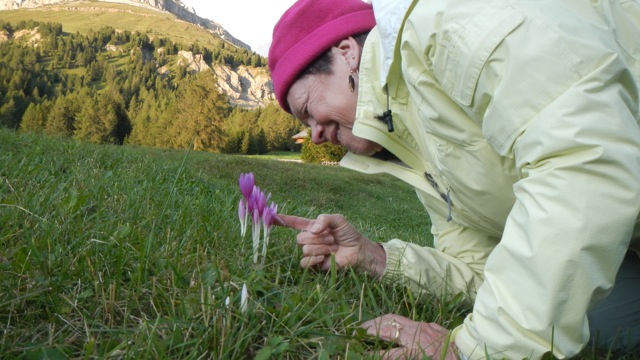
You can see the saffron crocus with the lower cliffs in the background.
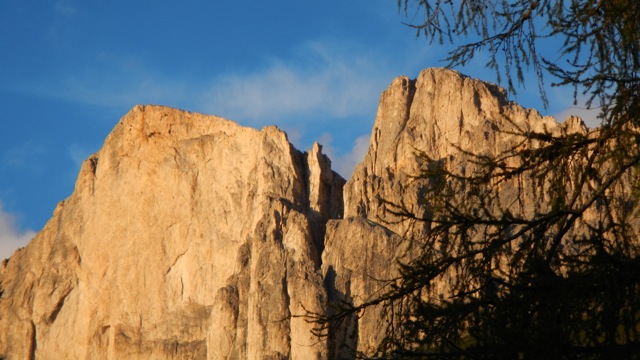
Rosengarten refers to the rosy alpenglow the mountains achieve. A local legend has it that the mountains are a petrified rose garden.
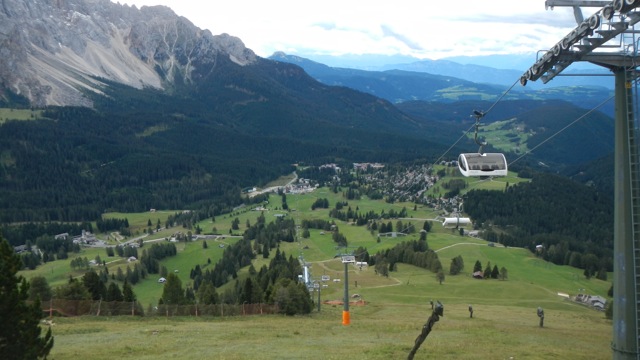
This is how to gain the meters into the high country.
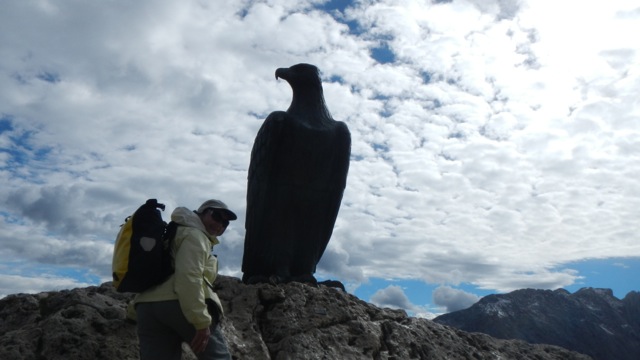
Alpine eagle waiting to be fed.
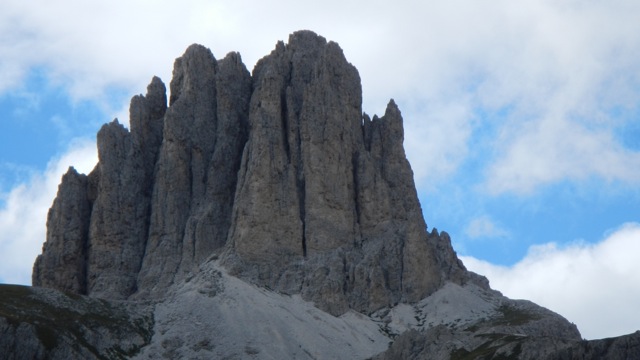
The Dolomites are about 17 separate groups of dolomite rock pinnacles. They are very spectacular.
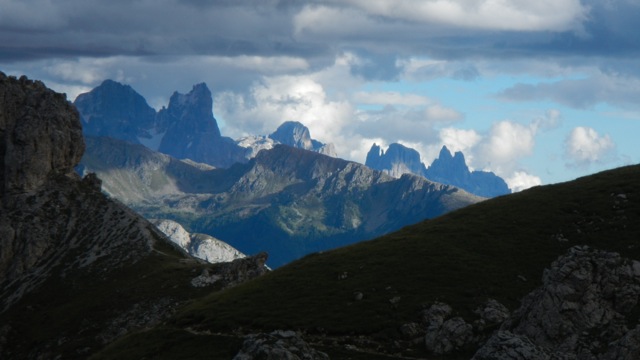
Did I say spectacular?
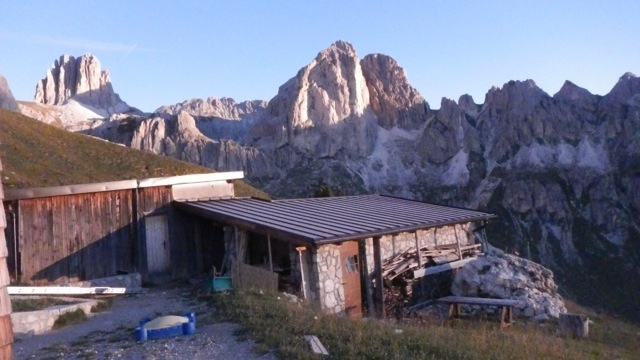
Our hut, now a rifugio since we are in Italy, is called Rhoda de Vael. Nice situation.
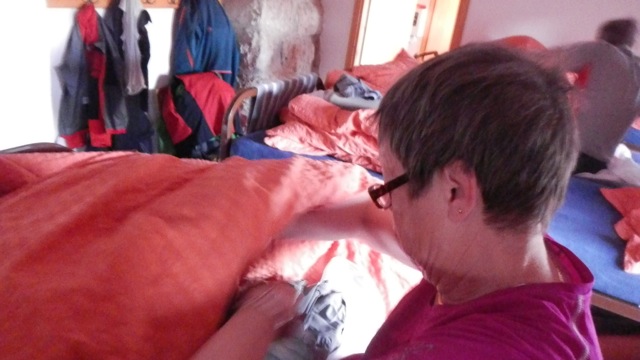
We are in upper bunks. Not a nice situation, but we survived climbing down and getting to the bathroom in pitch darkness.
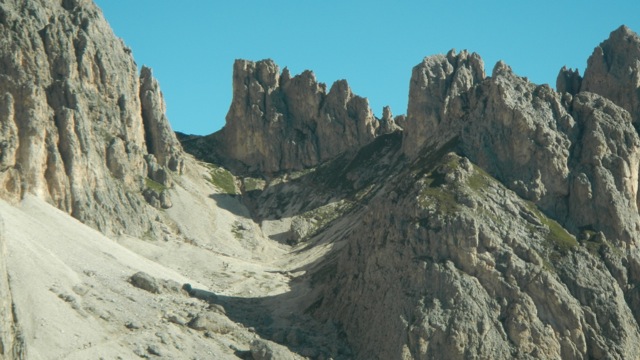
Our pass is the high u shaped notch top left. Yes, there is a path up there. Passo Zigolade.
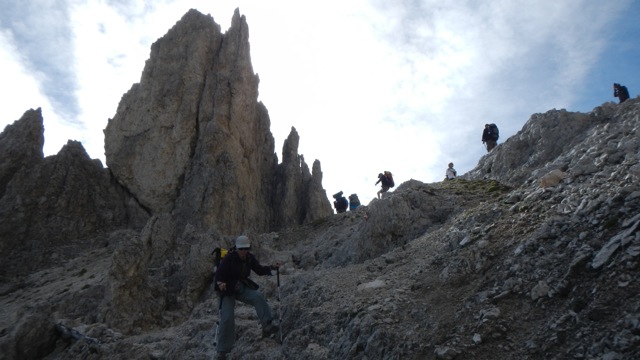
Down the other side of the pass.
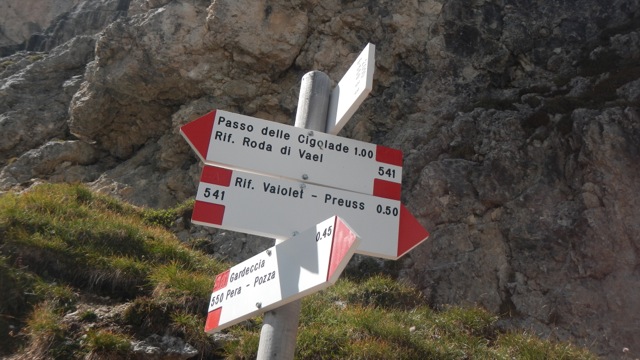
The signs are no longer yellow. Italian signs are red and white.
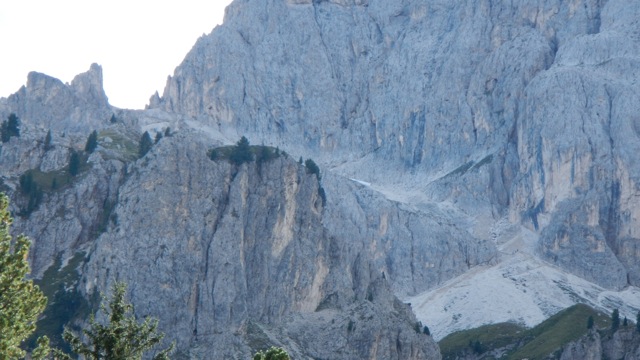
Wide view of the path down. It is the ramp from upper left to lower right. Looks thin, doesn't it?
Now on to Merano, a move to the west. The Dolomites have several sub-ranges (17), and we are moving from the Rosengarten group (aka Catinaccio in Italian) to the Texel (Tessa) group. Since 1918, Sud Tirol has been a German/Italian area where the locals prefer German but the Italian administration of Mussolini attempted to change all the German to Italian.
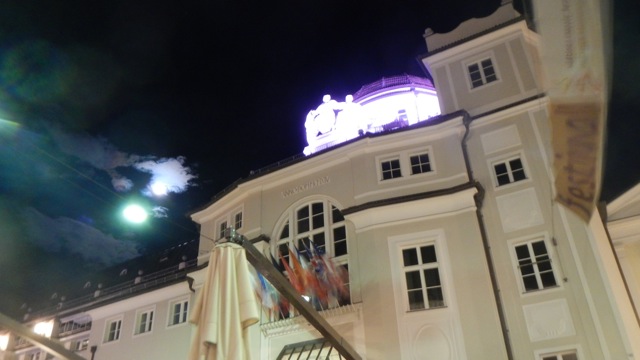
Merano is a spa town about 300m in elevation where the surrounding peaks are about 3,000m in elevation. This photo is of the main spa center in the heart of town. What it does not show are the palm and olive trees that thrive in the mild low elevation climate.
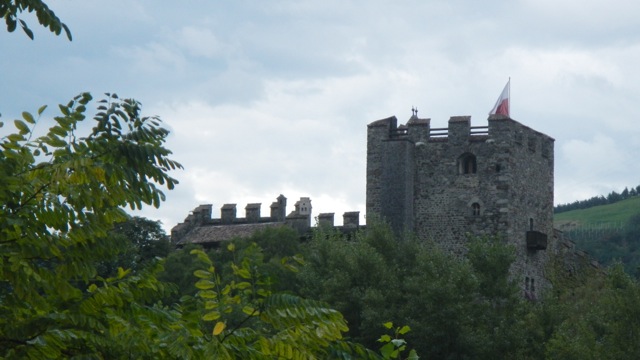
Merano has many castles in its environs. This is one castle we biked by on our way back to the city. We took a train 30km up the valley to the west to follow the Fiume
Adige, the river bed that served as the valley sewer. It still does, sort of. The sewer part has been decked over and re-routed to avoid the river, itself. This deck is where the bicycle trail is positioned to follow the river and provide occasional whiffs of the real reason for the route.
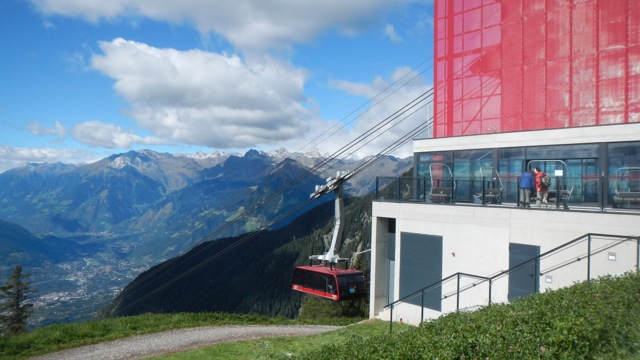
This is also a view of Merano, this time from the top station of Cable Car Merano.
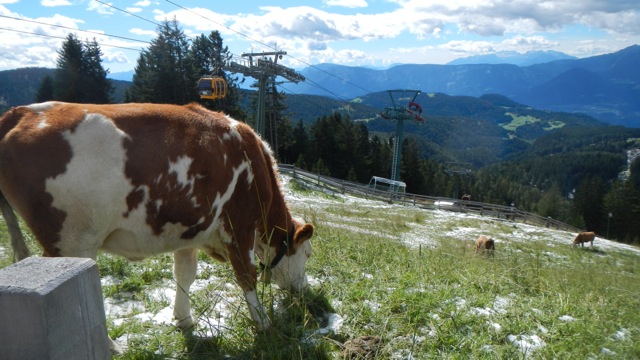
The alp slopes, here with the first snow of Fall, are clearly multiple use. Dairy in the summer, skiers in the winter.
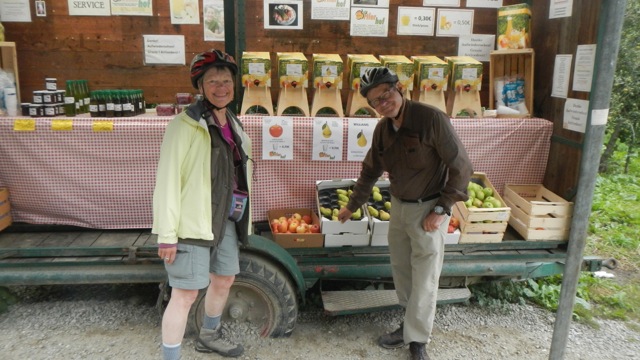
Our bicycle tour down the Val Venosta passed this produce stand with a wide selection of local fruit, veggies, and fruit nectars.
We stayed at a pension, although called Youth Hostel Merano, a short walk from the train and bus stations and from the bike rental operation.
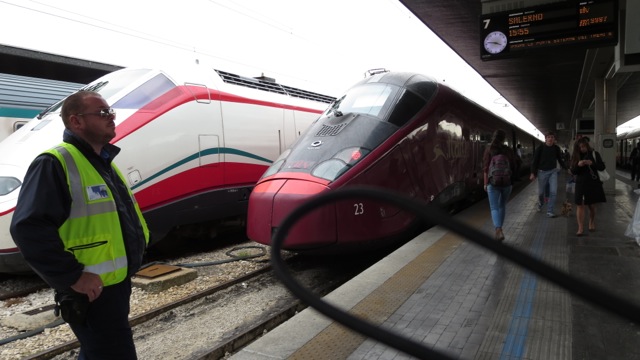
A short train ride and we were in Venice.
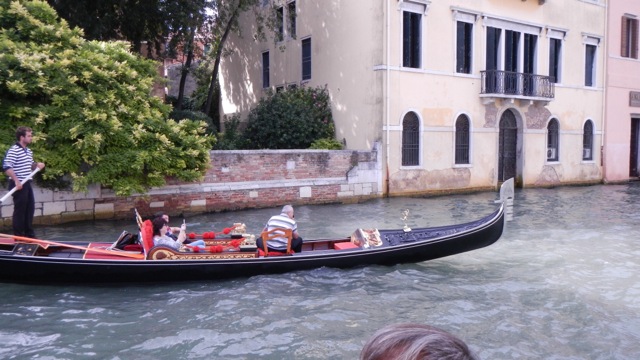
We found lodging for our first night after multiple phone calls from the train station. Not too difficult to do. I ran the time from the card that promptly expired when it was most needed the next day when we took the wrong ferry to wind up across the bay in Murano (a different Merano. This one was the glass manufacturing Murano near Venice).
Our first, and by far the best, dinner in Venice at Osteria all Ponte featured an around the world selection of seafoood.
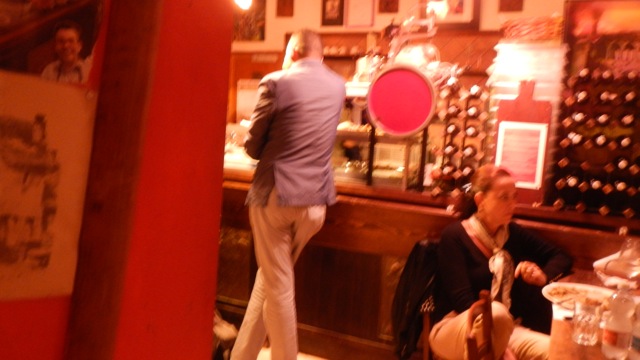
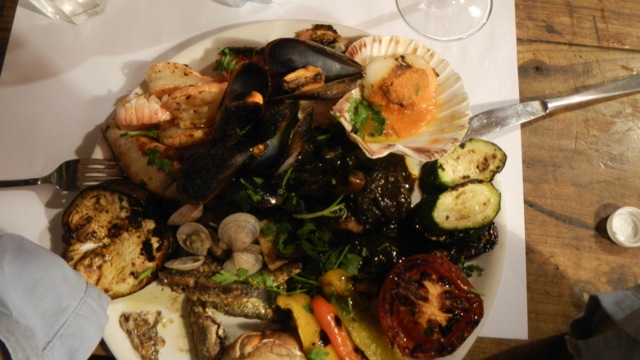
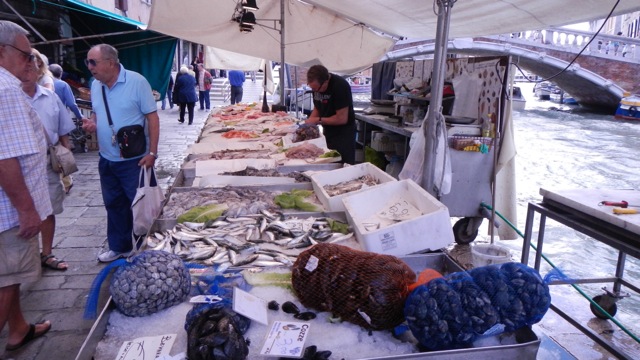
Fish market on the Canal.
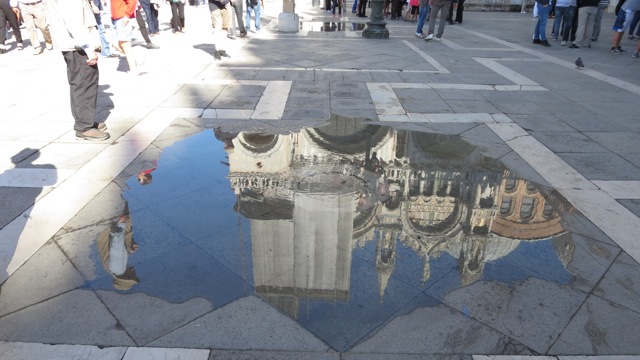
St. Marks is flooded twice a day when the tides bubble up outside and inside.
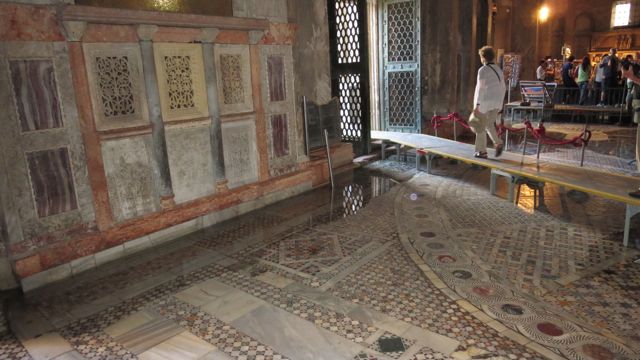
Masks are popular items. If you don't like your image, you can easily acquire another, perhaps truer, one.
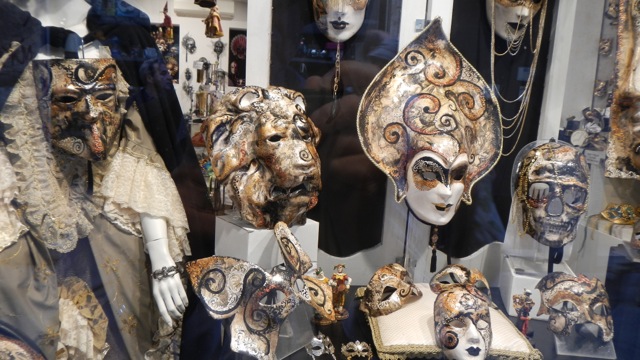
Our visit coincided with that of 10 cruise ships! That was about 20,000 more visitors than might have been there on another day. The crowds were thick, thick, thick. The alpine areas were much less touristed.
Conclusion Venice:
Lodging was scarce and expensive. We stayed one night at Alloggi Barbaria. The host was very helpful. He recommended the Osteria del Ponte, best restaurant in Italy. The next two nights were at an apartment called: Elegant Apartment in Venice. It was arranged via airb&b. At $200 a night for a clean, but certainly far from elegant, apartment, it was expensive and far off the beaten track. It was also difficult to locate, but the GPS got us back to it at night. It would have been a much better value for a group or family. The kitchen and laundry facilities would save quite a bit on breakfasts and lunches. This apartment now seems to be off the market.
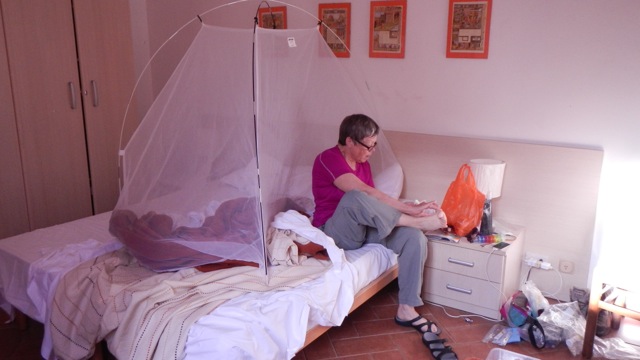
Oh, and the mosquitoes! I left the kitchen window open while out sightseeing. Bad move. At least 14 of the thirsty bugs moved in to wait for bloodsucking hours of darkness. We were prepared. First, 14 flicks of a towel killed bugs on the walls and ceilings. Fortunately for us, and not the mosquitoes, the walls were white. Then we unrolled our bug tent, a fine unit from Long Road. The night was quiet and peaceful. We kept our blood.
Guidebooks: We found the Rick Steves Venice audio guide to be very useful in many ways. Highly recommended. We had it on my iPod touch. It even had a blow-by-blow account of the slow ferry ride down the Grand Canal.
On to Turkey via Milan. For some reason, we couldn't fly from Venice. Fighting our way to the Milan airport was not a good use of time, no matter that it cost less!
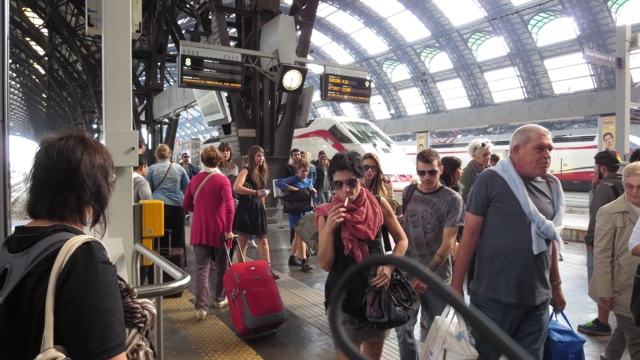
Milan Stazione Centrale.